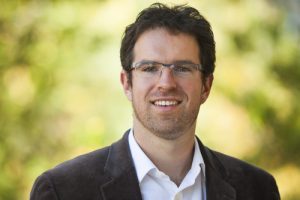 Professor Eric Hoyt is thrilled and honored to be among the most recent winners of a prestigious grant from National Endowment for the Humanities (NEH). Hoyt and his frequent collaborator, Stephanie Sapienza (University of Maryland), have received a $294,265 Digital Humanities Advancement Grant for their project, “Broadcasting Audiovisual Data: Using Linked Data and Local Authority Aggregators to Enhance Discoverability for Broadcasting.”
Professor Eric Hoyt is thrilled and honored to be among the most recent winners of a prestigious grant from National Endowment for the Humanities (NEH). Hoyt and his frequent collaborator, Stephanie Sapienza (University of Maryland), have received a $294,265 Digital Humanities Advancement Grant for their project, “Broadcasting Audiovisual Data: Using Linked Data and Local Authority Aggregators to Enhance Discoverability for Broadcasting.”
The project builds upon Hoyt’s and Sapienza’s work on another NEH-funded project, “Unlocking the Airwaves: Revitalizing an Early Public and Educational Radio Collection,” which digitally reunited the collections of the National Association of Educational Broadcasters (NAEB). Founded in the 1920s, the NAEB was a precursor to nation’s high profile public broadcasting networks, NPR and PBS, as well as a form of distance education that arrived decades before Canvas, Seesaw, and Zoom.
The NAEB’s paper documents were preserved locally at the Wisconsin Historical Society, whereas the recordings were saved at the University of Maryland. Using digital technology, Sapienza and Hoyt brought together the split collections for broad public access. Two Communication Arts PhD students, Matt St John and JJ Bersch, worked as project assistants and were instrumental to the project’s success.
Hoyt says he is excited for the opportunity to continue working with the NAEB collection and collaborate with even more institutions and individuals. The new project will use cutting-edge linked data methods to improve the discoverability and level of description of other university radio collections. Partners on the project include the University of Minnesota Libraries’ Radio Station WLB/KUOM collection and the University of Wisconsin Libraries’ Radio Station WHA collection.
“I have learned so much about both radio history and databases by working with Stephanie on this project,” says Hoyt. “I am grateful for the funding from the NEH and the chance to learn even more from working with new collaborators.”